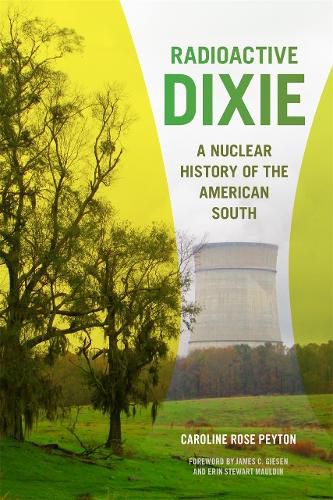Readings Newsletter
Become a Readings Member to make your shopping experience even easier.
Sign in or sign up for free!
You’re not far away from qualifying for FREE standard shipping within Australia
You’ve qualified for FREE standard shipping within Australia
The cart is loading…






How and why did the South's history, culture, and politics shape the region's nuclear and energy industries? And how is that history linked to broader developments in the nuclear and energy industries-nationally and globally? Radioactive Dixie answers those questions as it traces the origins of the U.S. South's love affair with the atom.
The South contains more nuclear reactors than any other region in the United States and much of the nation's radioactive waste. This book shows how the South's atomic footprint resulted from a decades-long effort by Southern politicians, industry figures, universities, and government officials to transform the American South into a nuclear-oriented region. Waving the atomic talisman, the nuclear industry served as one pivotal part in a larger project of regional modernization-a process that began in the nineteenth century and lasted more than a century. From this perspective, bomb plants and nuclear reactors promised to expand the South's economy and to cast its identity as a center of modern industry, science, and engineering and as a producer of cheap, limitless energy. Radioactive Dixie is the first book to chronicle this regional story that had national implications. Southern history informed national siting decisions, regulatory oversight, and attitudes toward the various nuclear projects that proliferated in the post-World War II period.
$9.00 standard shipping within Australia
FREE standard shipping within Australia for orders over $100.00
Express & International shipping calculated at checkout
How and why did the South's history, culture, and politics shape the region's nuclear and energy industries? And how is that history linked to broader developments in the nuclear and energy industries-nationally and globally? Radioactive Dixie answers those questions as it traces the origins of the U.S. South's love affair with the atom.
The South contains more nuclear reactors than any other region in the United States and much of the nation's radioactive waste. This book shows how the South's atomic footprint resulted from a decades-long effort by Southern politicians, industry figures, universities, and government officials to transform the American South into a nuclear-oriented region. Waving the atomic talisman, the nuclear industry served as one pivotal part in a larger project of regional modernization-a process that began in the nineteenth century and lasted more than a century. From this perspective, bomb plants and nuclear reactors promised to expand the South's economy and to cast its identity as a center of modern industry, science, and engineering and as a producer of cheap, limitless energy. Radioactive Dixie is the first book to chronicle this regional story that had national implications. Southern history informed national siting decisions, regulatory oversight, and attitudes toward the various nuclear projects that proliferated in the post-World War II period.